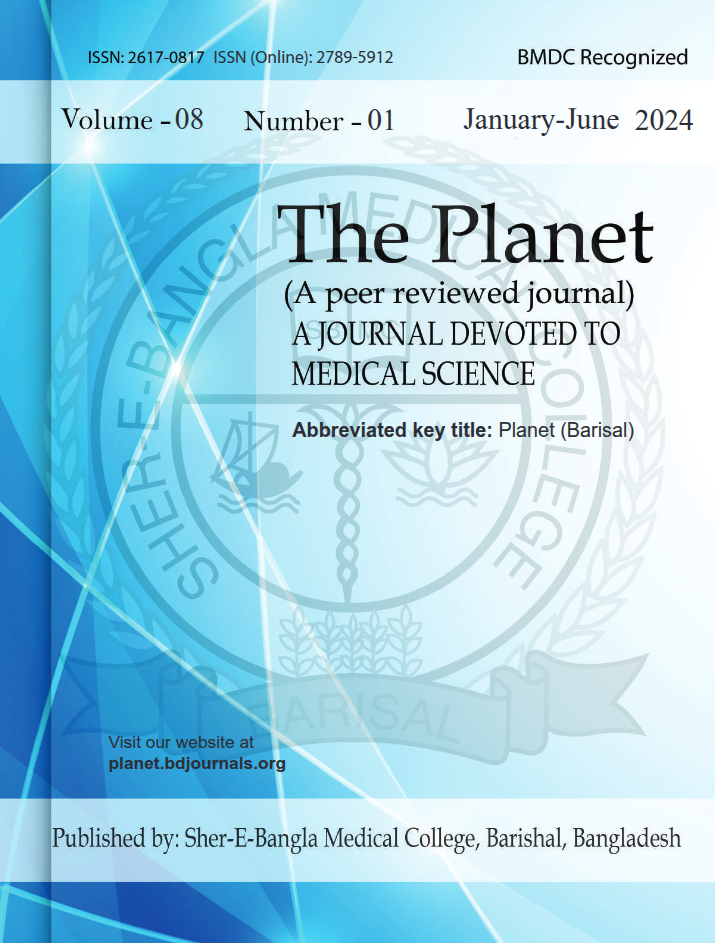Clinical Manifestations and Risk Factors of Stroke Patients in a Tertiary Healthcare Center in Bangladesh — An Observational Study
Published 28-12-2024
Keywords
- Stroke,
- Ischemic Stroke,
- Hemorrhagic Stroke,
- risk factors,
- Bangladesh
- Clinical Profile ...More
Copyright (c) 2024 The Planet

This work is licensed under a Creative Commons Attribution 4.0 International License.
How to Cite
Abstract
Introduction: This study aims to evaluate the clinical profile, risk factors, and outcomes of stroke patients admitted to the Medicine Unit of Dhaka Medical College Hospital (DMCH). Methods & Materials: This observational cross-sectional study included 101 stroke patients diagnosed via clinical evaluation and neuroimaging. Data on demographics, clinical manifestations, laboratory parameters, and risk factors such as hypertension, diabetes, dyslipidemia, smoking, and alcohol consumption were collected. Statistical analysis was performed using SPSS to compare ischemic and hemorrhagic stroke subtypes. Results: Among the 101 enrolled patients, ischemic stroke was more prevalent (51%) than hemorrhagic stroke (49%). The mean age of ischemic stroke patients was 59.5 ± 13.9 years, while hemorrhagic stroke patients had a mean age of 61.0 ± 11.2 years. Hypertension was the most common risk factor (78%), followed by diabetes (46%), dyslipidemia (32%), and smoking (28%). Common clinical presentations included hemiparesis (67%), speech disturbances (43%), and altered consciousness (35%). Laboratory findings revealed significant variations in lipid profiles and electrolyte imbalances between stroke subtypes. Conclusion: Stroke remains a significant health concern in Bangladesh, with ischemic stroke being slightly more common than hemorrhagic stroke. Hypertension and diabetes emerged as major contributors, underscoring the need for early detection and preventive strategies. These findings highlight the necessity for improved stroke management protocols and targeted public health interventions to reduce stroke burden in Bangladesh.



